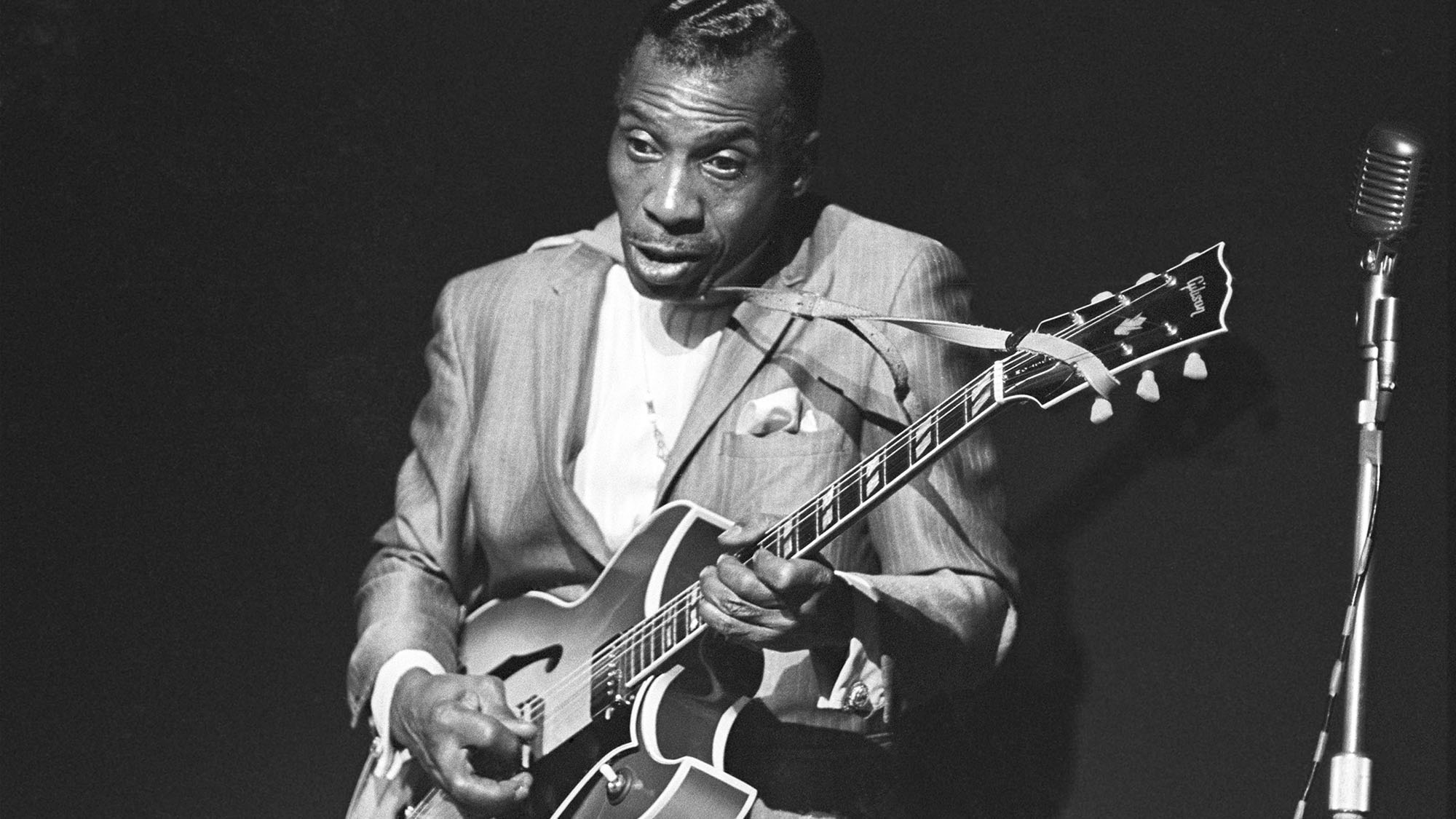His onstage antics inspired Jimi Hendrix to play with his teeth, while his groundbreaking solos influenced B.B. King, Chuck Berry and Albert King: T-Bone Walker changed the course of blues guitar playing – and the role of electric guitar in popular music
The Texan troubadour knew how to give the crowd their money's worth, and players such as Jimi Hendrix were watching. This lesson in his playing style has plenty of biting string bends and blues flavor

When it comes to blues guitar legends, few are as groundbreaking as T-Bone Walker. Born Aaron Thibeaux Walker on May 28, 1910, in Linden, Texas, T-Bone was a pioneering figure in the popularisation of the electric guitar, playing a crucial role in shaping the blues and influencing countless musicians that followed. Players from B.B. King and Albert King to early rock and rollers like Chuck Berry, all name him as a major influence.
Though a native of Texas and often associated with Texas blues, T-Bone’s move to California in the 1930s allowed him to refine his style and contribute to the emerging West Coast blues scene. This style is characterised by a smoother, jazzier sound, contrasting the raw, gritty Chicago blues.
T-Bone’s songs often featured sophisticated harmony, such as 9th and 13th chords, an emphasis on piano and horn sections, and a laid-back, swinging rhythm. His distinctive blend of blues with jazz and swing elements, combined with his smooth vocals and innovative guitar techniques, was sophisticated and exciting, and among the first to place the electric guitar at the forefront as a lead instrument.
This way T-Bone helped to revolutionise blues and shape the sound of popular music for the next century. His virtuosic style was among the first to feature intricate single-string runs, and his use of string bends and expressive phrasing set a new standard for guitarists, expanding the possibilities of the instrument and liberating it from its traditional role as part of the rhythm section.
The jazz influence in T-Bone’s playing came about in his use of 9th chords, which he would often slide chromatically towards the target tonality. His soloing was more in keeping with blues language, and he primarily used the minor pentatonic and blues scale, often adding the 9th into his phrases – a device much copied by guitarists in the decades to come.
Another hallmark of his style was his inventive use of rhythm. T-Bone frequently switched between straight and swing feels and often used a double-time feel in his solos, a technique often heard in the playing of saxophonists but innovative for guitarists at the time.
T-Bone was an electrifying performer, well known for his stage presence and showmanship. Jimi Hendrix would later borrow T-Bone’s tricks of playing the guitar with his teeth or behind his head, and Chuck Berry’s signature duck walk was heavily influenced by T-Bone’s antics. This performance flair and exceptional playing dazzled audiences, cementing his status among the great blues artists of all time.
The solos here present some of these ideas for your exploration. As always, I’d recommend spending some time listening to T-Bone, and immersing yourself in the sound of this incredibly important artist.
Get the tone
Amp Settings: Gain 3, Bass 3, Middle 4, Treble 5, Reverb 3
T-Bone was known for his use of Gibson hollowbody archtop models such as the ES-5 or Barney Kessel (as pictured), often paired with a tweed Fender amp. Don’t worry if you don’t have an archtop, as any classic style guitar will get you close. Use the neck pickup and dial in a tone that ‘s warm but slightly brighter than you might expect for this jazzy-blues style.
Study 1
Our first study is a slow blues in G. It starts with dominant 9th chords that use ornamentation to suggest a 13th sound. This was typical of T-Bone, as it borrowed the harmonic sophistication of jazz.
The double-time feel in bar 10 is an example of how he would play with rhythms to create interesting passages. This concept is worth applying to your own improvisations. Notice also the lick in bar 11; could this have influenced a major player in rock and roll, perhaps?
Study 2
Here’s an upbeat, jump blues that demonstrates how T-Bone would play over a faster tempo.
Again, we see that the licks lean heavily on the 9th degree of the scale, a device that has influenced countless guitarists that followed, including Jimi Hendrix, Eric Clapton, and Stevie Ray Vaughan.
Notice that, even with the faster tempo, there is plenty of space in the solo, and the phrasing implies an almost ‘composed’ question and answer approach.
Get The Pick Newsletter
All the latest guitar news, interviews, lessons, reviews, deals and more, direct to your inbox!
David is a guitarist, producer, and educator. He has performed worldwide as a session musician, with artists and bands spanning many musical genres. He draws upon over 20 years of experience in both live performance and studio work, as well as numerous composing credits. As a producer, he's collaborated with artists across genres, including pop, RnB, and neo soul. David holds a master’s in jazz guitar and teaches at BIMM London and the London College of Music. He is also a regular contributor to Guitar Techniques magazine, sharing his love of blues in a monthly column.
“There are so many sounds to be discovered when you get away from using a pick”: Jared James Nichols shows you how to add “snap, crackle and pop” to your playing with banjo rolls and string snaps
How to find new approaches to blues soloing – using fingerstyle improv ideas and Roy Buchanan-inspired licks









![Joe Bonamassa [left] wears a deep blue suit and polka-dotted shirt and plays his green refin Strat; the late Irish blues legend Rory Gallagher [right] screams and inflicts some punishment on his heavily worn number one Stratocaster.](https://cdn.mos.cms.futurecdn.net/cw28h7UBcTVfTLs7p7eiLe.jpg)


